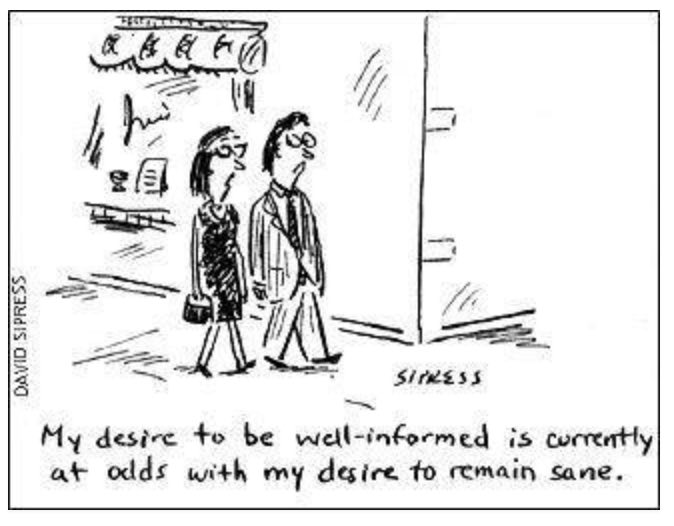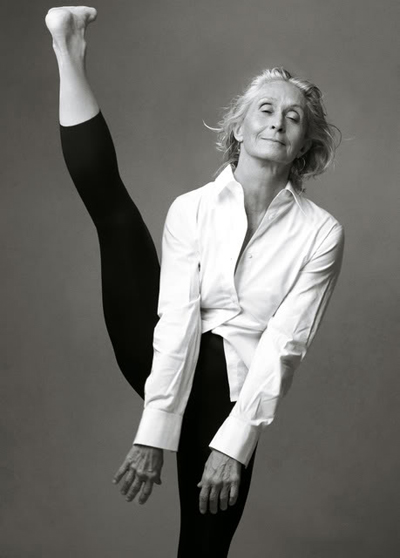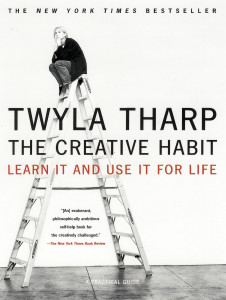I’ve been recently inspired by Twyla Tharp’s book THE CREATIVE HABIT: LEARN IT AND USE IT FOR LIFE.
Here are some quotes:
Some people find … the moment before creativity begins … so painful that they simply cannot deal with it. They get up and walk away from the computer, the canvas, the keyboard; they take a nap or go shopping or fix lunch or do chores around the house. They procrastinate. In its most extreme form, this terror totally paralyzes people.
After so many years, I’ve learned that being creative is a full-time job with its own daily patterns. That’s why writers, for example, like to establish routines for themselves. The most productive ones get started early in the morning, when the world is quiet, the phones aren’t ringing, and their minds are rested, alert, and not yet polluted by other people’s words. They might set a goal for themselves—write fifteen hundred words, or stay at their desk until noon—but the real secret is that they do this every day. In other words, they are disciplined. Over time, as the daily routines become second nature, discipline morphs into habit.
The routine is as much a part of the creative process as the lightning bolt of inspiration, maybe more. And this routine is available to everyone. Creativity is a habit, and the best creativity is a result of good work habits.
In order to be creative you have to know how to prepare to be creative …there’s a process that generates creativity—and you can learn it. And you can make it habitual.
It takes skill to bring something you’ve imagined into the world: to use words to create believable lives, to select the colors and textures of paint to represent a haystack at sunset, to combine ingredients to make a flavorful dish. No one is born with that skill. It is developed through exercise, through repetition, through a blend of learning and reflection that’s both painstaking and rewarding. And it takes time.
If art is the bridge between what you see in your mind and what the world sees, then skill is how you build that bridge.
That’s the reason for the exercises. They will help you develop skill. Some might seem simple. Do them anyway—you can never spend enough time on the basics.
Everything is raw material. Everything is relevant. Everything is usable. Everything feeds into … creativity. Without the time and effort invested in getting ready to create, you can be hit by the thunderbolt and it’ll just leave you stunned.
It’s vital to establish some rituals—automatic but decisive patterns of behaviour—at the beginning of the creative process, when you are most at peril of turning back, chickening out, giving up, or going the wrong way.
Who is Twyla Tharp?
A few great links to share
• Masters of the Everyday: Dutch Artists in the Age of Vermeer. Be sure to click through the individual paintings and read the explanations. It’s wonderful how you can zoom in for a close look. I especially liked “The listening Housewife.” For a review of this exhibit, read this post.
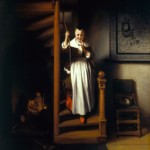
• Why Your Critics Aren’t The Ones Who Count, an inspiring— and funny—Ted-type talk by Brené Brown.
What I’m up to
I’m having a hard time with the revision of Moonsick. I keep stirring the pot, but it’s slow to thicken. This beautiful photo of “Man in a fog” by Harman Wardani feels perfectly expressive of my state of mind.
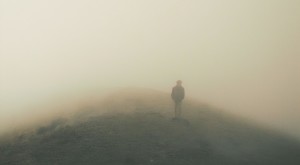
Reading Tharp’s book, I realized that I have a ritual that triggers creativity: I record the day’s writing goals in a notebook and — bam! — I’m off to the races.
You may have noticed that my website is being revised (so that it will be visible on all devices). It’s still in the construction phase, so please bear with us.
The world news continues to be both distracting and extremely distressing. This cartoon, which I posted to FaceBook, has been getting a lot of “likes,” so I gather most everyone feels the same:
